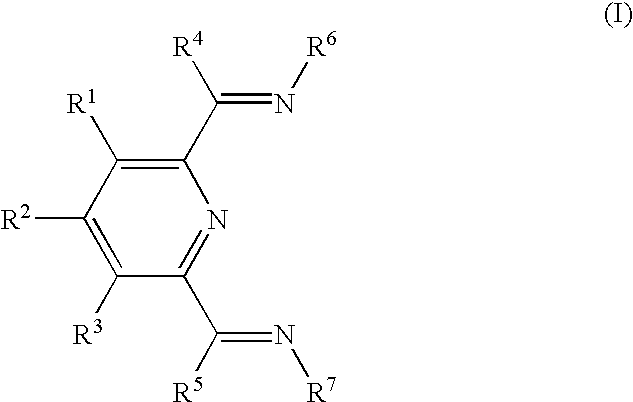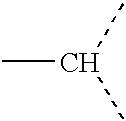Polymerization of olefins
a technology of olefins and polymers, which is applied in the field of polymerization of olefins, can solve the problems of not being able to obtain a representative sample of the olefin series, not being completely correct, and the higher cost of .alpha.-olefins,
- Summary
- Abstract
- Description
- Claims
- Application Information
AI Technical Summary
Problems solved by technology
Method used
Image
Examples
example 2
A 600 mL Parr.RTM. autoclave was cleaned, heated up under vacuum and then allowed to cool under nitrogen. It was then brought into a drybox. In the drybox, to a Hoke.RTM. cylinder was added 5 mL toluene and 1.0 mL MAO (13.5 wt % toluene solution). To a 20 mL vial was added 4.0 mg of B and 16 mL toluene. Only 2 mL of this solution was pipet transferred to the 600 mL autoclave. Then 57.2 mg of a 0.1 wt % A in biphenyl (solid) solution (weight of solution) was also added to the autoclave, followed by addition of 250 mL 2,2,4-trimethylpentane and 25 g 1-pentene. The autoclave was sealed. Both the Hoke.RTM. cylinder and the autoclave were brought out of the drybox. The autoclave was assembled to a high pressure line. The Hoke.RTM. cylinder was then connected to the autoclave. The autoclave was pressured up with nitrogen. The autoclave was heated to 85.degree. C, and nitrogen was released to 21 kPa. It was then pressurized up with 2.times. to 690 kPa ethylene, venting each time and finall...
PUM
| Property | Measurement | Unit |
|---|---|---|
| atmospheric pressure | aaaaa | aaaaa |
| temperature | aaaaa | aaaaa |
| temperature | aaaaa | aaaaa |
Abstract
Description
Claims
Application Information
 Login to view more
Login to view more - R&D Engineer
- R&D Manager
- IP Professional
- Industry Leading Data Capabilities
- Powerful AI technology
- Patent DNA Extraction
Browse by: Latest US Patents, China's latest patents, Technical Efficacy Thesaurus, Application Domain, Technology Topic.
© 2024 PatSnap. All rights reserved.Legal|Privacy policy|Modern Slavery Act Transparency Statement|Sitemap



